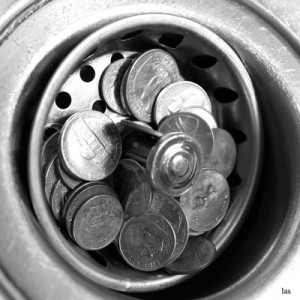 My exciting new teaching job starts in January (yay!). There’s a business-casual dress code, and unfortunately, all of the clothing I wore in my previous life as a professional was also worn in my previous life as a thinner woman who never had a baby (not yay). That means I’m in the market for an entire wardrobe of business-casual clothing.
My exciting new teaching job starts in January (yay!). There’s a business-casual dress code, and unfortunately, all of the clothing I wore in my previous life as a professional was also worn in my previous life as a thinner woman who never had a baby (not yay). That means I’m in the market for an entire wardrobe of business-casual clothing.
I’ve never been that into clothing. I wear it to keep decent and warm, and I prefer to buy clothing that looks and feels good, but I don’t have a huge wardrobe. I like to keep a limited wardrobe with basic pieces that can be mixed, matched, and worn for years. I still wear clothes that I bought in college over 5 years ago.
Because I can think of a lot of things I’d rather spend money on than clothes, I’m trying to get creative about building this wardrobe. If you’re looking to build or refresh your wardrobe, here are some tips.
Lose the weight.
This was my first plan a year ago after Judah was born. I have several nice pairs of pants that are about a size too small. I even have a few pieces that are TWO sizes too small from my really skinny newlywed phase (it was short but fabulous). If I could shed the final 20 pounds I gained during pregnancy, I would double my professional attire wardrobe. Sadly, the chances of me losing that much weight in the next three weeks in the middle of the holiday season are slim (no pun intended). So it’s on to plan B.
Assess what you already have.
Many of the sweaters, blouses, and tops I have from before pregnancy still fit reasonably well. I also have a lot of pieces that I wear in casual settings, but they can easily be dressed up with nice slacks or a cardigan. Thanks to those pieces, I’m really only in the market for pants and maybe a few new pieces for layering.
Check the thrift stores.
Because of the nature of dressy clothing (many people own slacks or blouses that they only wear a couple times a year), it’s possible to find really nice dress clothes in excellent condition for unbelievably low prices at thrift stores. I’ve never had much luck with clothing at thrift stores, but I’ll definitely give it a shot.
Never pay retail.
When you see a really flattering top or pair of pants at full price, it can be tempting to buy it if really like it. Don’t do it! I worked in retail, and I can tell you, the turnover for stock at clothing stores is incredibly fast. What’s new and full price today will be marked down to clearance in a matter of weeks. Wait it out and keep a close eye on certain styles. Come the end of the season, that full-price item will be marked down at a fraction of the price. Even if your size is sold out in store, you can usually shop online for more sizes and colors.
Buy basic pieces that can be mixed and matched.
It’s not the most exciting way to build a wardrobe, but it keeps costs down and simplifies things tremendously. Most of my clothing is in dark colors that coordinate (black, grey, dark blue, brown). Every top I own can be worn with either black or khaki pants, which makes it easy to shop for new pieces that coordinate well with pieces I already have. Choose a color palette that suits you, and then look for clothing that will easily coordinate in several different configurations.
What tips do you have for building a professional wardrobe without spending a fortune?



